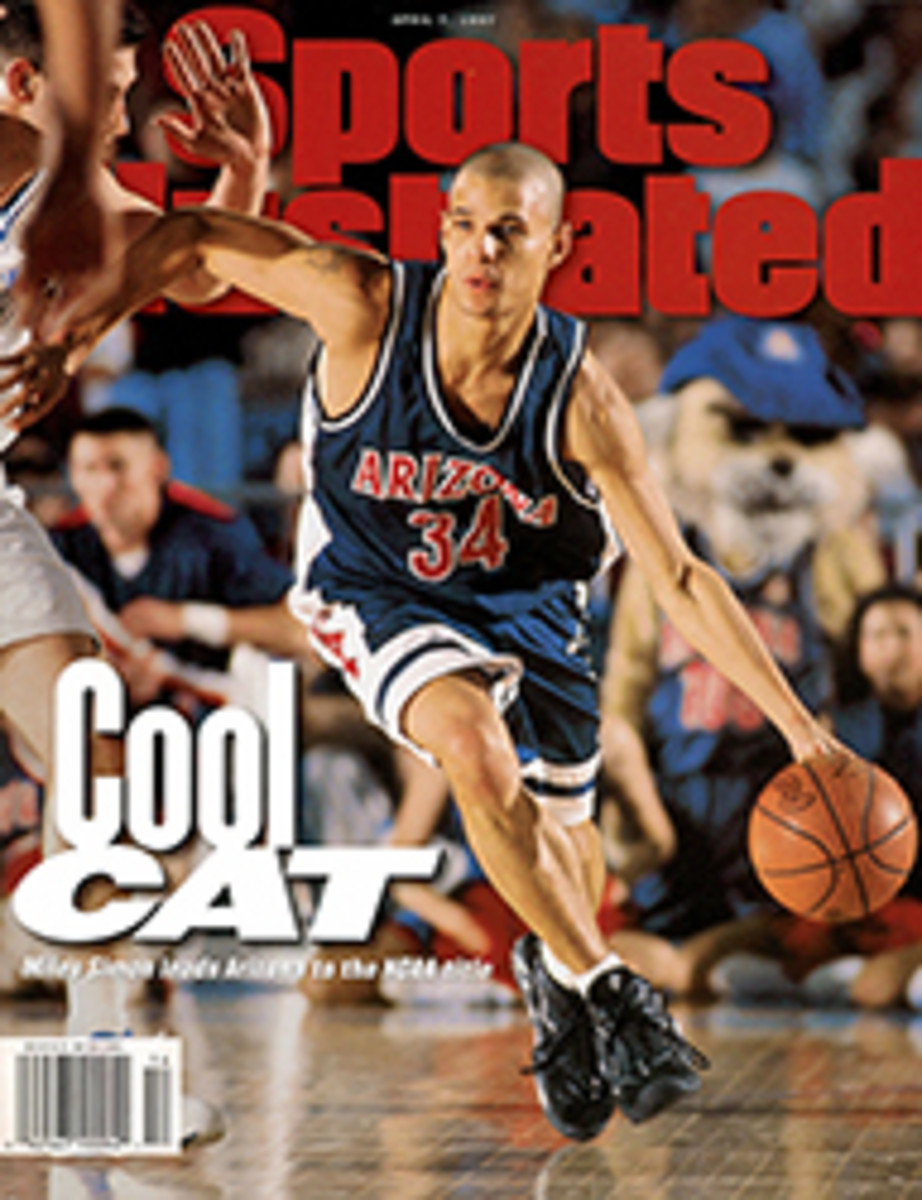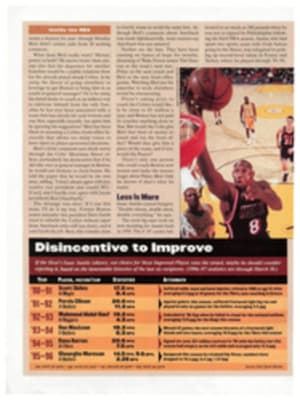
NOTHING TASTES LIKE ROADKILL TURKEY VULTURES WILL FLOCK TO A BIRD FEEDER IF IT'S WELL STOCKED WITH CARRION
Just what I needed for my bird feeder: a road-killed woodchuck.
I slammed on the brake, pulled the car to the side of the road,
dashed out, shooed away the flies, grabbed the bloated corpse by
the tail and popped open the trunk. As I was about to drop the
body in--my wife will never notice the bloodstains, I thought--a
passing driver slowed down and gave me the once-over. Better a
suspicious stranger eyeing me than the couple who surprised me
the other day as I pawed through a supermarket dumpster in quest
of a spoiled chicken.
Let others feed robins, cardinals or purple martins; the birds
for me are turkey vultures. My vulture feeder is in a brushy
field a hundred feet downhill from my house, and the
three-by-three-foot feeding platform, set six feet above the
ground, is high enough and large enough to assure the vultures
that they won't be ambushed by a predator. Despite their
fearsome appearance--bald red head, big beak and a wingspread of
about six feet--vultures are very wary birds, and why another
creature would even dream of attacking one is beyond my
comprehension. The stinking breath of a turkey vulture, so the
saying goes, "would cloud a photographer's lens." And, to top it
off, vultures vomit on strangers. Like all birds of prey the
turkey vulture has superb eyesight, but it may also have the
keenest sense of smell of any soaring bird in the world.
As a rule I set out the day's fare around 10 a.m., because the
vultures are late risers that like to stretch their wings and
sun themselves before taking to the air. (If I set the table the
night before, crows are likely to have had at the food by the
first light of dawn.) On heavy-rain days I don't put out food,
because without the sun the birds tend to stay put, rather than
fly.
Vultures quickly become accustomed to a free lunch, and on a
sunny day they show up promptly to check out the menu, which
might be dead mice, chipmunks and squirrels; chicken, meat and
cold cuts; extraordinarily ripe Brie, Roquefort and mozzarella
cheese; and the vultures' favorites: filleted carcasses of
largemouth bass, sunnies and crappies and the heads of brown
trout.
Vultures are masters of soaring and gliding flight. With their
wings set in a dihedral position, a slight V, they seem to stay
aloft for hours without a single beat of their wings. They do
this by getting lifts from thermals (rising currents of hot air)
and updrafts (caused when the wind is deflected upward off a
hill or a mountainside). Inasmuch as vultures feed on animals
only if they are already dead and dead animals are not as
numerous as live animals, vultures have to be capable of
sustained flight, with no unnecessary expenditure of energy.
All this helps to attract turkey vultures to a well-placed
feeder; the birds don't have to work very hard. After they've
been south for the winter, they check out my feeder upon
returning north. They won't land and eat if people are around,
so when I see them coming I hide behind a window to watch. Ever
on the alert, they glide downward from a thousand feet above me,
slowly circling down and around and down again. As they fly by
me at eye level, their beguiling aerial ballet, performed by
from one to a half-dozen vultures, is four-star theater that can
last as long as 20 minutes. Turkey vultures are like giant
feathered versions of the paper airplanes I made as a boy,
except that my planes always crashed, while the vultures keep on
gliding by.
Eventually one will put on the wing brakes, land gently on the
platform and look around, then look around again and yet again
before holding down the day's special with a foot and tearing
into it with its beak. Should another vulture venture to land on
the platform, the original occupant is likely to reach over and
expel the interloper by biting it on the neck.
For all their love of the dead, vultures won't dine on just any
stiff. The major dictum of la cuisine de vautours is, The more
rotten the better. This is an important consideration for anyone
who wants to feed turkey vultures. Along with other New World
vultures, turkey vultures lack the razor-sharp bills of their
Old World counterparts. The griffon vultures of Africa, for
example, can strip off a rhino's hide with the ease of a chef
peeling a ripe avocado. Turkey vultures apparently depend on
other creatures, such as maggots and flies, to soften the flesh
of a fresh cadaver. In fact, several days passed before the
vultures finished the road-killed woodchuck mentioned above, and
even then they began by probing the soft spots--the eyes and the
anus.
Both New World and Old World vultures evolved some 50 million
years ago--but strange as it may seem, they are not related.
They look alike because of what scientists call convergence.
This occurs when unrelated species in distant regions occupy
similar niches. And it explains why the Tasmanian wolf resembles
the North American wolf and why the South American fish known as
the dorado looks like a salmon.
Old World vultures belong to the same order as eagles, hawks and
falcons (Falconiformes), while New World vultures belong to the
order that includes storks (Ciconiiformes). One behavioral trait
that vultures and storks share is that they excrete waste on
their legs to cool themselves.
There are seven species of New World vultures, and two besides
the turkey vulture are native to the U.S. These are the
California condor, an endangered species, and the black vulture,
mostly found in Southern states but moving north these days. The
turkey vulture, in contrast, is the most successful and
widespread of all New World vultures, ranging seasonally from
southern Canada and the continental U.S. down through South
America to Patagonia. In the early 19th century the species
rarely ventured north of New Jersey on the East Coast. Its
movement north since then has been attributed to warmer
temperatures and to highway construction that has resulted in
more roadkills.
When winter comes to the northern states, turkey vultures
migrate south. The folks in Hinckley, Ohio, celebrate their
return with a one-day festival. Hinckley residents claim that,
like the swallows that return to San Juan Capistrano, Calif.,
the "buzzards" show up in Hinckley every March 15, regardless of
the weather.
Turkey vultures nest as far as possible from people. Actually,
there is no nest, because the female simply lays two eggs on a
bare rock cliff, in a hollow log, in a cave or even on the floor
of an abandoned house. Vulture parents feed their young by
regurgitating food into their mouths. One theory is that
regurgitation transfers antibodies, in the form of
immunoglobulins, that make the young immune to botulism, anthrax
and other lethal bacteria or viruses in carrion.
The idea that the digestive system of the turkey vulture could
be of significance in human medical research helped lead to the
founding in 1994 of The Turkey Vulture Society, based in Reno.
The society's aim, according to Bill Kohlmoos, a former rancher
and the society's CEO, is "to study the turkey vulture and to
give it the proper understanding and respect to allow it to
continue its vital role in the natural environment of living
things on earth."
One study cited by Kohlmoos will be on the vulture's ability "to
disinfect rodent carcasses carrying the deadly hantavirus."
Another study, conducted by the General Accounting Office,
measured the threat of birds to military aircraft safety.
Ingestion of birds into jet engines caused 16,198 accidents over
a five-year period, with nine fatalities, according to the
study. The U.S. Air Force warns its pilots to avoid flying
through areas known to have dense vulture populations.
I have always been doubly taken with the scientific name of the
turkey vulture: Cathartes aura, from the Greek kathartes,
"cleanser," because the vulture cleans carrion, and aura,
meaning invisible breath of radiation, because of the bird's
bald red head. Then again, to my mind, Cathartes aura rhymes
with the lyrics from the song The Party's Over. This holds true
for the dead upon which the vultures feast, but for me, when I
see the birds glide toward my feeder, the party is just beginning.
COLOR PHOTO: FRANCOIS GOHIER/PHOTO RESEARCHERS INC. Turkey vultures are late sleepers, sun worshippers and wary of predators drawn to carcasses. [Four turkey vultures]
COLOR PHOTO: ROD PLANCK/PHOTO RESEARCHERS INC. Adult vultures eat, then regurgitate food to chicks, which are often reared in caves (right). [Turkey vulture eating carrion]
COLOR PHOTO: JIM ZIPP/PHOTO RESEARCHERS INC. [See caption above--Turkey vulture chick]

